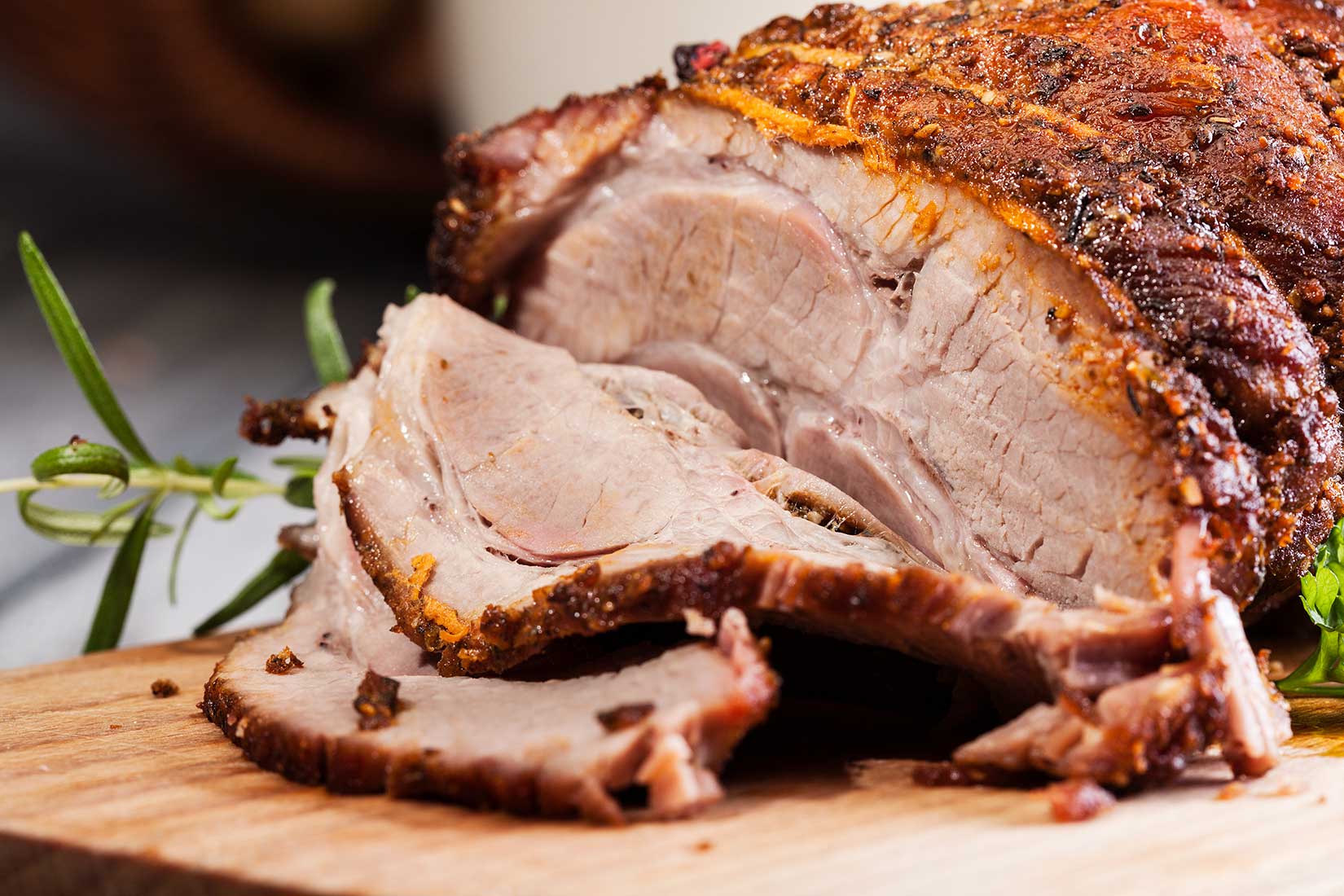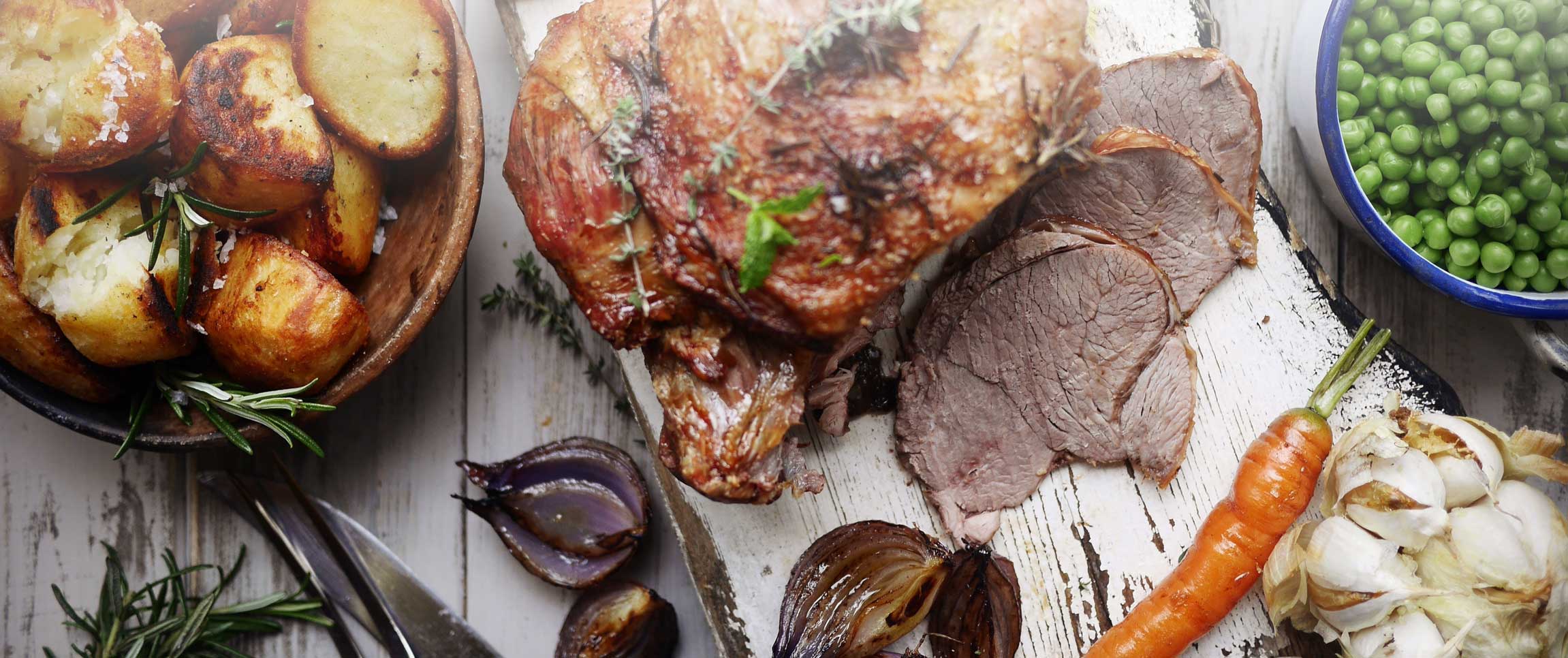Warm days are becoming fewer, and as the mercury drops, tastes shift from summer’s brightly acidic bites to deep, richer flavors.
It’s time to bring out those roasting pans and enjoy the crispy textures and intensified flavors brought about by your roasting oven. The trick is to appeal to current trends of clean and natural flavor profiles instead of the stodgy and heavier roast of days gone by. Let these roast options warm you up in the coming months.
Fowl
Lemon, garlic, and sprigs of fresh herbs are probably the perfect ingredients with which to roast a whole or a half chicken — not to mention they create an amazing aroma out of the oven. It may also feel a little obvious. Take a step back; consider brining your birds, which is a great way to add flavor and maintain juiciness after roasting.
Buttermilk brines are exceptionally popular for fried chicken but work just as well for roasts. These days, many restaurants partner with local craft breweries or even have an on-site brewery. Some heady brews, from deep IPAs to the tartness of a fruity gose, could be the perfect way to impart flavor into your bird. You could even wake up taste buds with an espresso brine or a soak in a special blend of teas.
After your bird has a flavor bath, a good spice rub down will help round out the flavors. Perhaps add a little heat from some cayenne or dried Aleppo peppers. Use a little allspice or nutmeg if the brine is fruity. And yes, finely ground espresso powder is an option for your rub — just use caution, a little goes a long way. Anything other than a powder is going to cause disappointment.
Ultimately, the lemon, garlic, herb roast might still be the way to go for your bird, but once brined, it definitely won’t taste ordinary.
Beef, Lamb, Pork
Serving up a dish of roast beef or roast leg of lamb can pose a bit of a problem, as they are not exactly single serve cuts that are ready quickly. Prime rib or roast rib of beef can be done in the traditional way, then cut to order, but you do run the risk of selling out on busy nights or having some very costly meat left over at the end of the evening.
There are two ways around that: slow roasting otherwise tough meats to break down their connective tissue such as shanks, where there’s no expectation of being served a rare or medium rare piece, or cutting more tender pieces into medallions or mini roasts that can be made to order.
Your best bet for adding flavor is via glaze. Sweetness isn’t necessarily the goal here, but the sugars are vital in helping to create a caramelized crust in a shorter amount of time than normal, so you can quickly serve up rare and medium rare dishes. Honey and maple syrup are also good candidates, limiting sweetness which can be further reduced by adding in a high-quality mustard or cider vinegar.
Possible cuts here might include hanger or tri-tip for beef, pork loin for medallions, or even breaking down a leg of lamb into single-serving portions — consider a garlic and mint jelly glaze for that one.
 Fish
Fish
Whole roasted fish has been a thing for a while now, and while it does look great on a menu, it can be a little intimidating for a diner. One preparation for roasted cod and potatoes is to roast potatoes with olive oil and butter until tender, then top with cod fillets, brushing the fish with more olive oil and butter. The only seasonings are salt and pepper. Honestly, with or without the potatoes, simple roasting of fish fillets in this manner really allows the fish to sing. Of course, a little fresh thyme and a splash of sherry will add a little punch while still keeping it simple.
Vegetables
Fall vegetables, from potatoes to squash to Brussels sprouts, are perfect for roasting and actually benefit flavor and texture-wise from the process. The only concern is the outer layer drying up prior to being cooked all the way through. Tossing in olive oil or butter is a good touch. Tossing in pan drippings from the roasted meats is better for adding both moisture and a dash of flavor. Drippings are a great base for the sauce of most any roast dish — just remember to keep it thin. Heavy cream sauces and others thickened with a roux can weigh down a dish and mask the natural goodness of your roast. Simple reductions from wine, sherry or port, added with restraint, can elevate without overpowering.
One Pot Dish
A roast is the kind of dish that benefits from being cooked with all of the elements together. Flavors blend, and the rendered fat bastes and integrates with the other ingredients. You could take this a step further by using the skillet or sheet pan to serve the roast. Imagine a sizzling skillet with roasted chicken thighs over a bed of wild rice and peppers, with the rice having soaked up the rendered juices from the thighs. Or consider a pan with half-a-brined chicken roasted with figs and rosemary. The sound, the steam — it all makes for a great show.
Schmaltz and Gribenes
Looking to punch up the roasted flavor without actually roasting or just want to dial your roast up a bit? Schmaltz and gribenes might be the answer. Schmaltz is rendered chicken fat cooked down from the trimmings that you might be throwing away. Gribenes are the crispy pieces of skin created during the rendering. The only other ingredients are an onion and salt. For what might you use this delicious mixture? Try tossed with roasted potatoes or spooned over broccoli rabe. Stir into sliced Brussels sprouts. It goes well with many of the proteins and is better than any heavy gravy. And, honestly, on a sandwich or using just a pinch on some deviled eggs, you’ll find true happiness.



